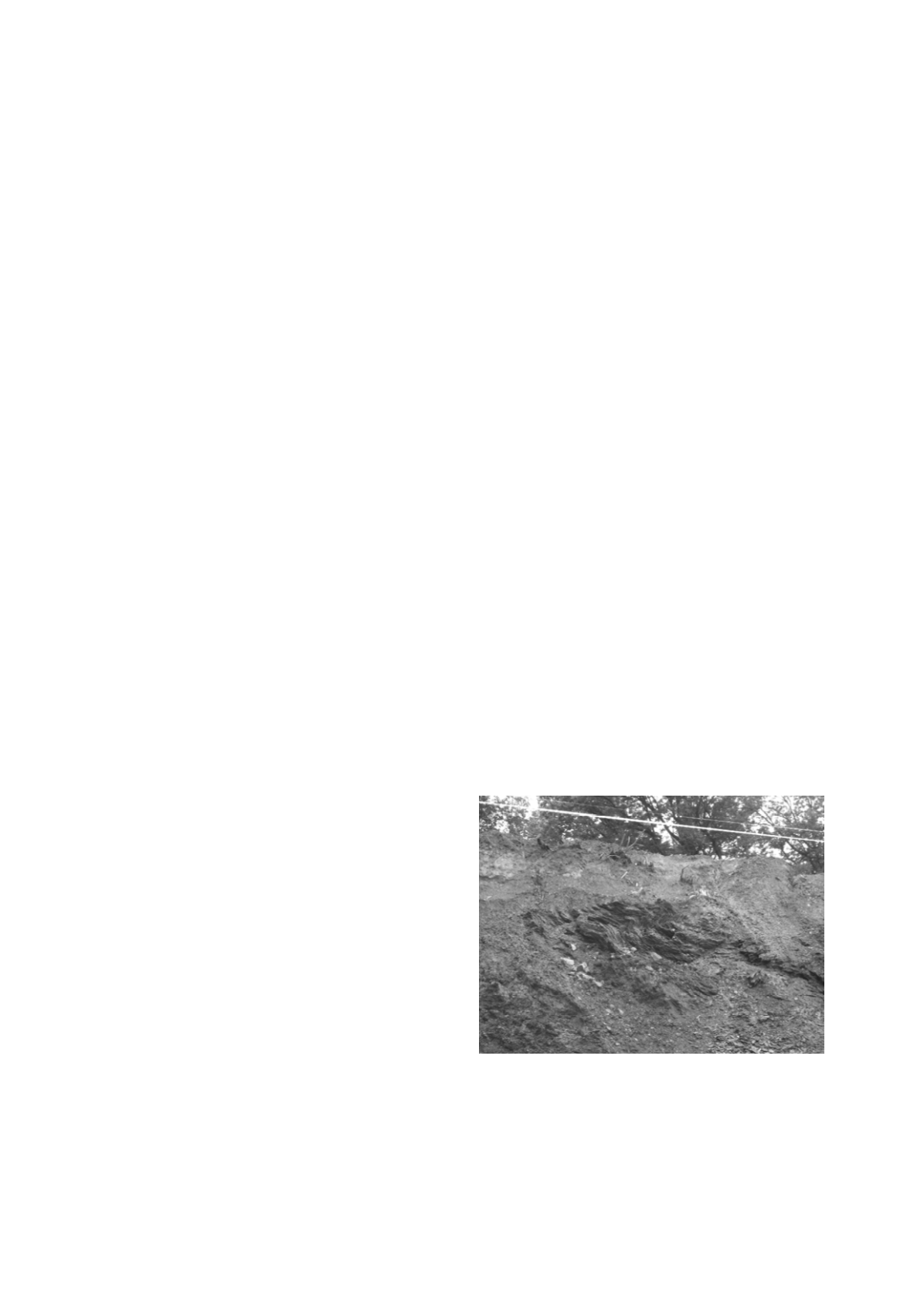
3099
Geotechnical Aspects of Design and Construction of the Mountain Cluster Olympic
Facilities in Sochi
Les aspects géotechniques des projets et de la construction des sites olympiques situés dans les
pays montagneux autour de la ville Sotchi
Fedorovsky V., Kurillo S., Kryuchkov S., Bobyr G., Djantimirov Kh., Iliyn S., Iovlev I., Kharlamov P., Rytov S.,
Skorokhodov A.
Gersevanov Research Institute of Foundations and Underground Structures, Moscow, Russia, e-mail:
Kabantsev О.
Moscow State Building Construction University, Moscow, Russia
ABSTRACT: Construction of Olympic Facilities in Krasnaya Polyana, mountainous area near Sochi, was a real challenge to Russian
geotechnical engineers for the lack of construction expertise in the area as compared to the Alpine mountain resorts with extensive
record of such activities. The geotechnical challenges of construction in this mountainous cluster include, as follows:
- assessment of deformation and strength parameters of eluvial and half-rock soils, including rubbly and gravely ones;
- selection of reliable techniques to analyze stability of natural, transformed and strengthened slopes;
- design of footings and counter-slide structures in order to ensure adequate safety accounting seismic actions and soil condition
variations.
The paper describes three case histories of Olympic construction projects within the mountainous cluster to illustrate how the above
problems were solved.
RÉSUMÉ : Les travaux de construction des bâtiments olympiques dans le massif montagneux de Krasnaya Polyana aux environs de
Sotchi ont causé nombre de difficultés aux géotechniciens russes. Cela s'explique par le manque de l'expérience nécessaire en ce
domaine dans cette région, contrairement au cas des stations de ski des Alpes, qui ont une plus ancienne et plus riche histoire de
développement. Les problèmes géotechniques essentiels liés à la construction dans la dite région consistent en les points suivants:
- évaluation des paramètres de déformabilité et de résistance des sols éluviaux et en partie rocheux, incluant des remblais rapportes ;
- choix de méthodes pertinentes de calcul de stabilité des pentes naturelles, aménagées et renforcées;
- conception de fondations et de structures installations para-glissements garantissant un niveau adéquat de stabilité, y compris
pendant les séismes ou un changement d'état des sols.
Dans cet article, on décrit trois études de cas relatifs à la construction des installations olympiques dans la région montagnarde pour
illustrer comment ces problèmes ont été résolus.
KEYWORDS: slope stability analyses, counter-slide structures.
1 INTRODUCTION
Erection of Olympic facilities within the Sochi mountainous
cluster (Krasnaya Polyana area) forced construction engineers,
particularly geotechnical engineers, to face quite a few
complicated problems due to tight deadlines, absence of
expertise of such large-scale projects in the area, complicated
geological conditions and seismicity. The situation dictated that
the leading research organizations such as Gersevanov Research
Institute of Foundations and Underground Structures would take
part in the design of some facilities and structures along with
expert evaluation of the project designs. The paper describes the
main challenges of the above work on three Olympic projects
and their respective solutions.
2. GEOLOGICAL ENVIROMENT
The project (highway from Krasnaya Polyana to “Roza-Khutor”
ski resort”, bobsleigh/luge track and a complex of ski-jumps)
are allocated on the left-bank slope of Mzymta river and
plateau expansion of Aigba ridge offspur at 950…1100 m
altitudes with the valley bottom at 485…490 m. The terrain
varies from gentle 5…15° slopes to steep 35…40° slopes. The
area is cut with streams – tributes to Mzymta.
Geologically there are features from quaternary to
underlying Jurassic deposits. The latter are mainly represented
by argillites, interlayered with sandstones and limestones.
Stratified partly outcropping argillites occur below 10…20 m
depths (Fig. 1).
In terms of geotechnical engineering the main rocks are
quaternary, mostly formed from of argillite bedrocks. Closer to
the surface gravelly clay-filled soils contain more clay and less
rock debris and gravel (Fig. 2).
Fig. 1. Outcropping argillite
Such grain size composition complicates any tests to
determine soil deformation and, especially, strength parameters.
Therefore, pillar shear test was the main method along with
large-size sample (
40 сm) direct shear test that required
application of large-size test equipment. Additionally, pillar
tests show the natural anisotropy of argillite properties due to its
stratified structure.


